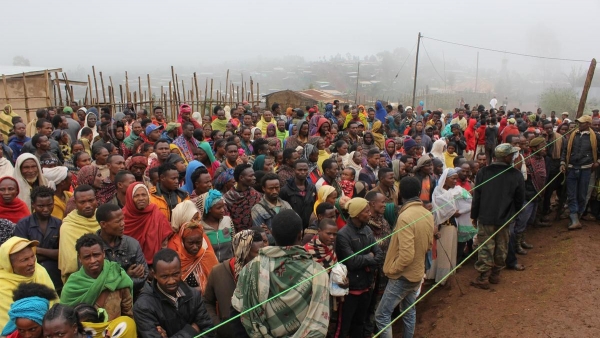While the phenomenon of refugees being forced to flee their homes due to conflicts and violence has been widely examined, the world of internally displaced people (IDPs) is yet to be discovered and properly addressed. Nonetheless, the latest UNHCR figures on forced displacement demonstrate that IDPs constitute the highest percentage of forcibly displaced people worldwide due to conflict, persecution and violence and as such require a more in-depth analysis. In fact, according to UNHCR, IDPs amounted to 45,7 millions out of the 79,5 million forcibly displaced people worldwide at the end of 2019. On the contrary, refugees amounted to 26 millions.
As a result, this first episode of the “IDPs and Conflict” series aims to outline the differences between external and internal displacement. Understanding the main characteristics of internal displacement vis-à-vis external displacement serves as a basis for the Osservatorio to analyse in the following weeks the challenges and vulnerabilities conflict-driven IDPs encounter.
The first difference to be acknowledge lies in the subjects and their definitions. According to the 1998 Guiding Principles on Internal Displacement, Internally displaced persons (IDPs) are "persons or groups of persons who have been forced or obliged to flee or to leave their homes or places of habitual residence, in particular as a result of or in order to avoid the effects of armed conflict, situations of generalized violence, violations of human rights or natural or human-made disasters, and who have not crossed an internationally recognized state border." Refugee is instead the main subject involved in external and can be defined a person who, "owing to well-founded fear of being persecuted for reasons of race, religion, nationality, membership of a particular social group or political opinion, is outside the country of his nationality and is unable, or owing to such fear, is unwilling to avail himself of the protection of that country; or who, not having a nationality and being outside the country of his former habitual residence as a result of such events, is unable or, owing to such fear, is unwilling to return to it" (Geneva Convention, 1981).
Secondly, the internal vis-à-vis external denomination varies based on the movement they have to face. While for both categories, the movement is involuntary or forced, internally displaced people do not or have not crossed internationally recognised territorial border and move within national borders. On the contrary, a crucial requirement to be considered a "refugee" is precisely crossing an international border.
Finally, their status in international law varies. While refugees enjoy a special legal status in international law and their main source of legal protection is the 1981 Convention relating to the Status of Refugees, IDPs do not have any special legal status. Nonetheless, by remaining within national borders, they are entitled to all the rights and guarantees as citisens and other habitual residents of their country.




